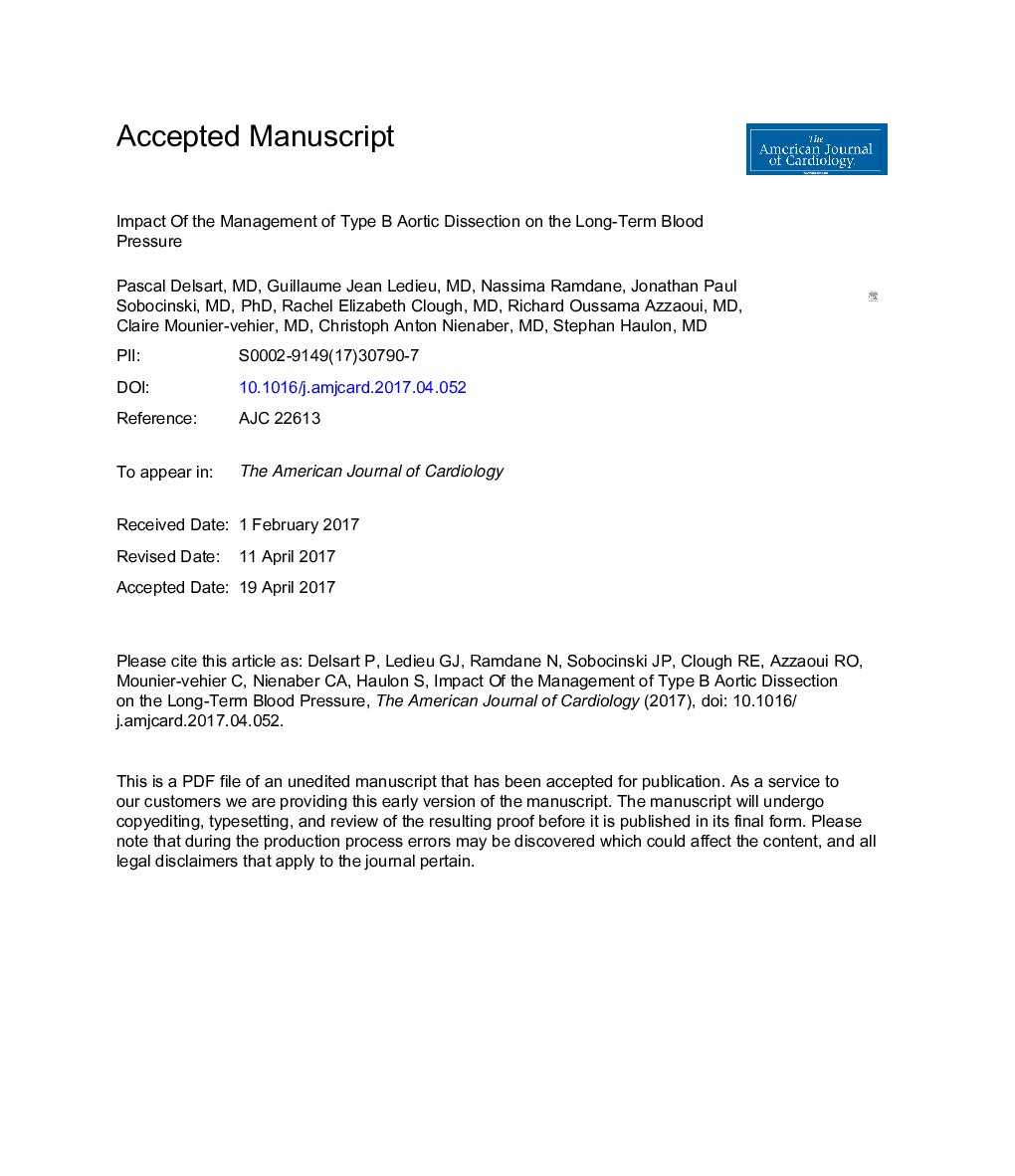| Article ID | Journal | Published Year | Pages | File Type |
|---|---|---|---|---|
| 5594831 | The American Journal of Cardiology | 2017 | 23 Pages |
Abstract
Ambulatory blood pressure (BP) measurement (ABPM) is recommended to assess optimal BP control, and we studied its influence after an acute type B aortic dissection (ATBAD). We retrospectively collected data from 111 patients with ATBAD from January 2004 to September 2014. Controlled BP group was defined according to a 24-hour BP under 130/80 mm Hg during chronic phase. The population consisted of 85 men, with a mean age of 61 ± 13 years and mean body mass index of 28 ± 6 kg/m2. The median delay between ambulatory BP measurement and ATBAD was 2 (0.3 to 4) months. The mean 24-hour BP of the entire population was 124/71 ± 15/8.8 mm Hg. BP was not controlled in 41 patients (37%). The treatment score at discharge was 3.9 ± 1.4. The mean glomerular filtration rate was 83 ± 28 ml/min/1.73 m2, with no difference between groups. Visceral stent implantation in the acute phase (odds ratio [OR] 3.857 [1.199 to 12.406], p = 0.023), higher left ventricular ejection fraction (OR 1.092 [1.005 to 1.187], p = 0.038), and higher platelet count at discharge (OR 1.064 [1.018 to 1.112], p = 0.006) were identified as predictors of good BP control by multivariate analysis. The analysis showed that nighttime systolic BP was associated with aortic events during follow-up (hazard ratio [HR] 5.2 [1.01 to 27.2], p = 0.049), particularly for a threshold of 124 mm Hg or more (HR 1.967 [1.052 to 3.678], p = 0.0341). Nighttime pulse pressure showed also its significance (HR 20.1 [1.4 to 282.7], p = 0.026). In conclusion, subclinical renal malperfusion revascularization seems to improve BP control. A greater nighttime systolic BP was associated with the risk of new aortic events during follow-up.
Related Topics
Health Sciences
Medicine and Dentistry
Cardiology and Cardiovascular Medicine
Authors
Pascal MD, Guillaume Jean MD, Nassima Ramdane, Jonathan Paul MD, PhD, Rachel Elizabeth MD, Richard Oussama MD, Claire MD, Christoph Anton MD, Stephan MD,
